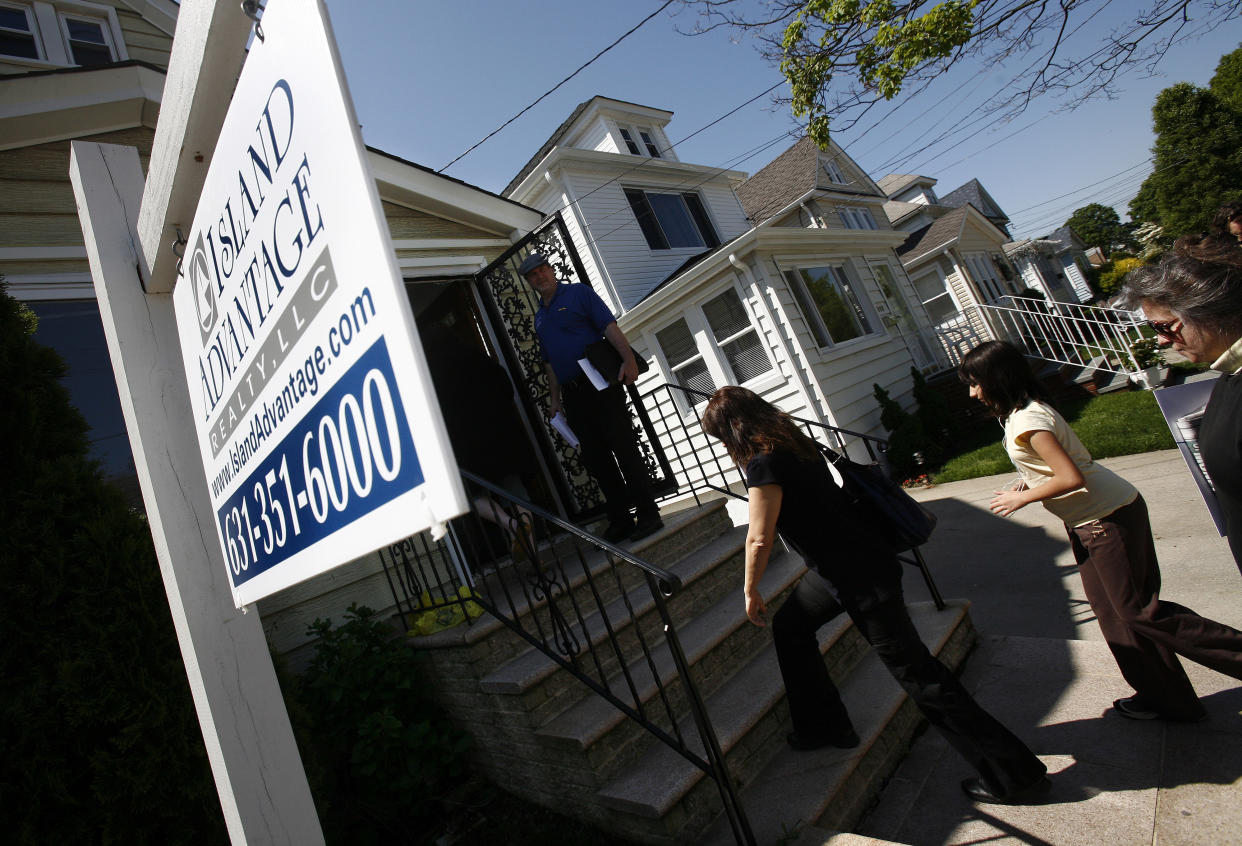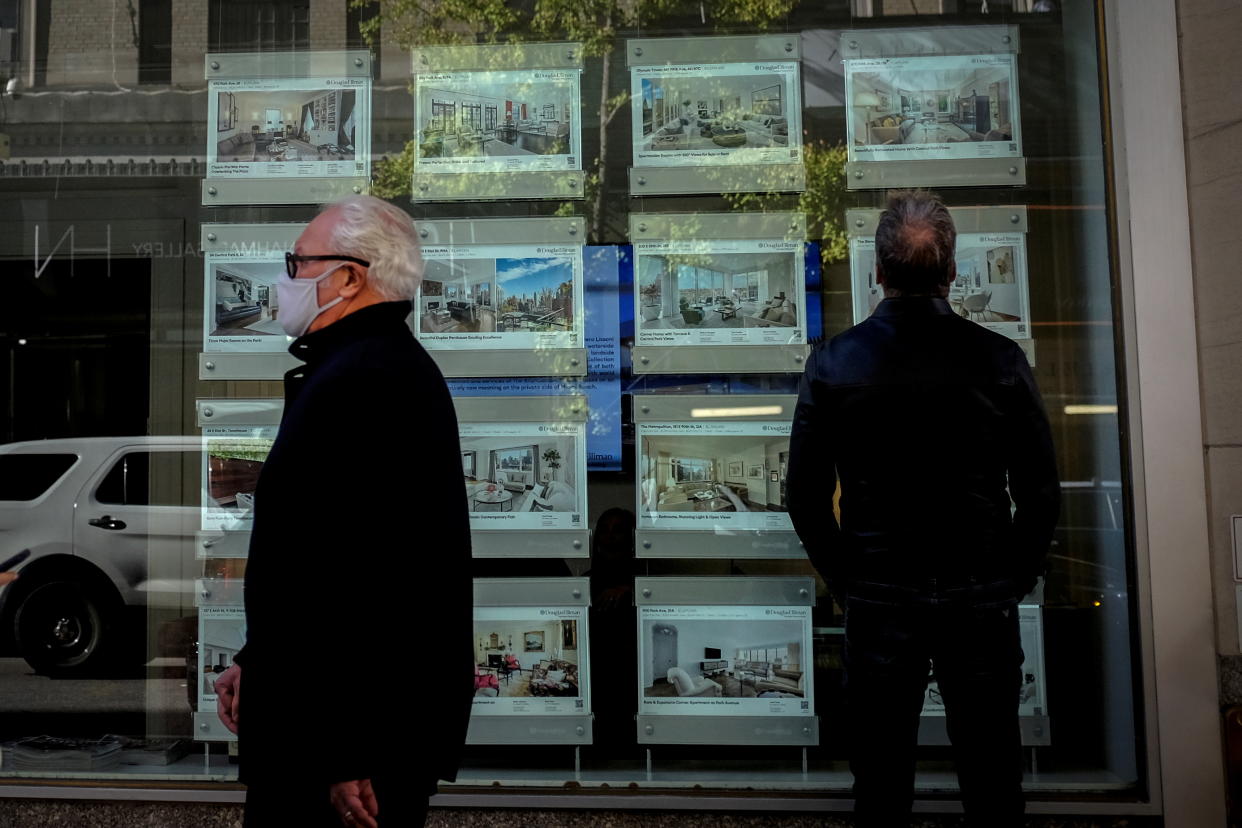Mortgage rates decline for the second week in a row
Mortgage rates edged down for the second straight week, allowing some buyers to return to their purchase plans despite inventory challenges.
The rate on the 30-year fixed mortgage declined to 6.35% from 6.39% the week prior, according to Freddie Mac. The decline follows two government releases this week that showed inflation had cooled again, which could convince the Federal Reserve to pause its aggressive rate-hike campaign.
Though some prospective homebuyers capitalized on the dip this week, many remain highly sensitive to affordability pressures as home prices rise this spring. Meanwhile, sellers are notably less active this spring, further deteriorating the inventory shortage.
“Things are pretty sluggish right now, but you would expect that given the kind of conditions we’ve been experiencing,” Keith Gumbinger, vice president of HSH.com, told Yahoo Finance. “Mortgage rates are still pretty high, we’re not at that 7% mark at the moment, but high enough. Of course, affordability and inventory remain an issue.”
'Nothing on the shelf'
Some homebuyers were quick to respond to the recent dip in rates, but it wasn’t enough to restore demand to year-ago levels — yet another sign that affordability still is a primary concern this year.
The volume of mortgage applications to purchase a home increased 5% from the previous week, the Mortgage Bankers Association’s latest survey for the week ending May 5 found. But overall purchase activity was still 32% lower than a year earlier on a seasonally unadjusted basis.
Three factors are slowing down the market this spring, the MBA noted.
First, the recent banking turmoil has led some lenders to tighten standards — particularly on jumbo loans for purchases of higher-priced homes. Second, continued elevated mortgage rates have kept many entry-level buyers on the sidelines. The third and most problematic reason is a dearth of homes for sale.
“Inventory is a key problem," Gumbinger said. "Borrowers can adapt to higher interest rates and they do over time, we’ve seen it. But if there’s nothing to buy, it doesn’t matter how well you align with the market conditions because there’s nothing behind the store, there’s nothing on the shelf.”

The lack of available inventory along with rising demand has also caused home prices to rise, reversing an easing trend from the winter.
According to Altos Research, the median price of single-family home for the week ending May 8 was $449,000, up 0.9% from $445,000 the week before. The median price of newly listed properties jumped 3.4% to $419,970 from $406,000 the week ending May 1.
“For buyers, affordability became a tremendous issue over the last couple of years largely due to the change in interest rates, but also related to significant increases in home prices.” Gumbinger said. “It’s become much more of a challenge now that there aren’t enough houses to meet the demand that’s out there.”
The inventory shortage could get worse

Despite conditions pointing to a seller's market, elevated mortgage rates are convincing many homeowners to forgo selling this spring — worsening inventory woes.
There were 21.3% fewer homes listed for sale in April compared with last year, Realtor.com found, largely due to potential sellers feeling rate-trapped by their current low mortgage rate.
Available inventory of single-family homes for sale fell to 419,000 for the week ending May 8, a separate study from Altos Research found. Though the decline was modest, it’s another sign that fewer sellers are listing at a time when listings typically pick up.
The problem of inventory has been worsening since the start of the year. For instance, in February there were 79% more listings on the market than in 2022. That difference is now down to 37%, Altos Research found, and shrinking.
Further, there are only eight to 10 more weeks of seasonal inventory growth left before reaching the usual peak on July 1.
“It might be as soon as July when we have fewer homes on the market than last year. Negative year-over-year inventory change by July would be shocking to me,” Mike Simonsen, founder and president of Altos Research, wrote in a blog post. “I never saw that coming.”
Gabriella is a personal finance reporter at Yahoo Finance. Follow her on Twitter @__gabriellacruz.
Read the latest financial and business news from Yahoo Finance
